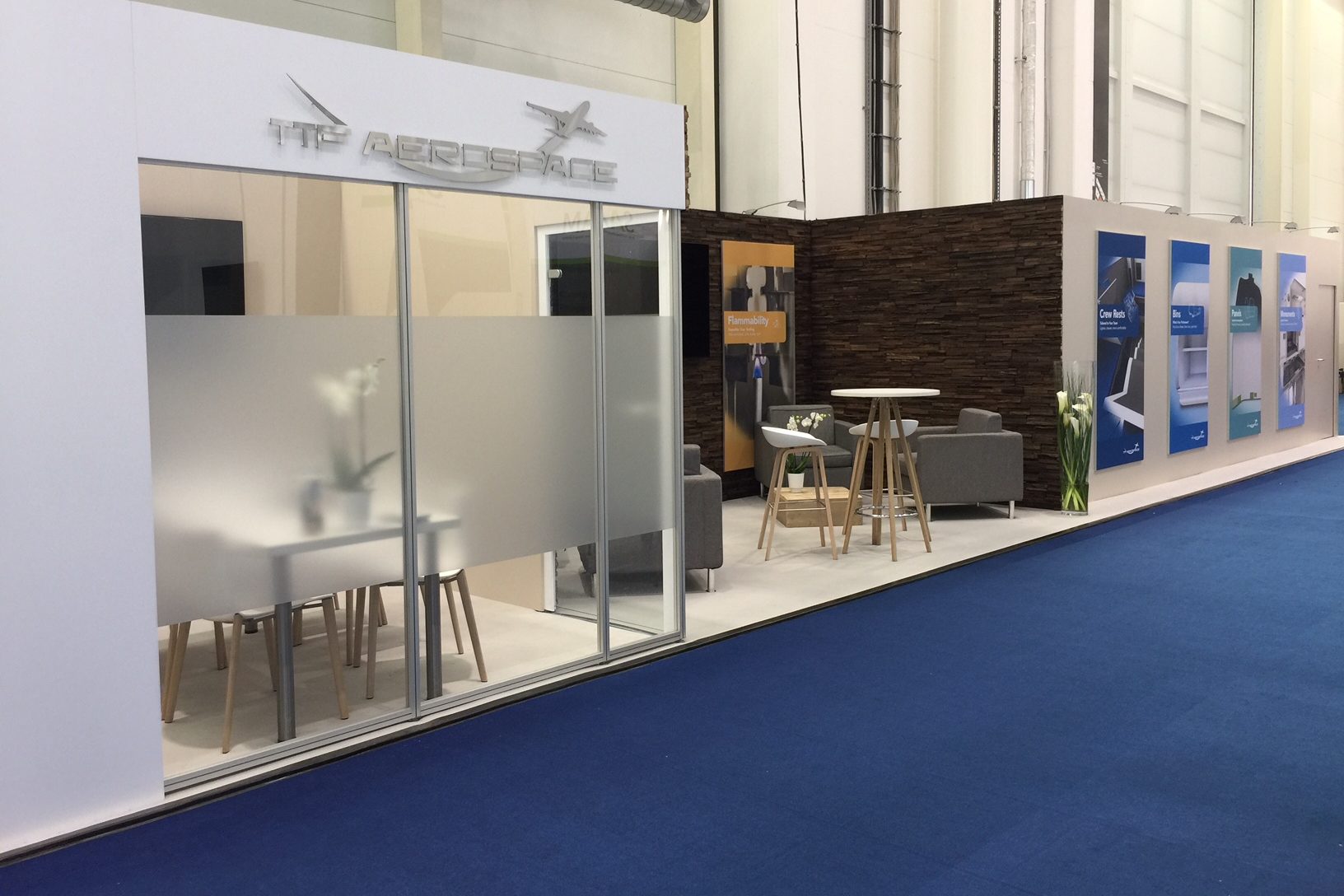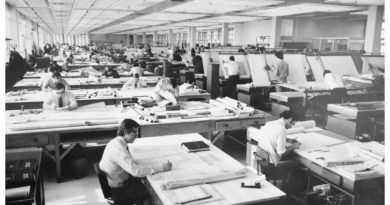The Red Lights of Europe
In Amsterdam is a challenging project to reconfigure KLM’s 747s. In Hamburg, there is the Aircraft Interiors Expo attended by airlines and manufacturers from all over the world. One is a a six-month marathon, the other a three-day non-stop binge. But both towns have one thing in common – a booming, and legal, red light district.
In Amsterdam, it’s not unusual for college-aged women to finance their educations by using their looks and wiles behind a glass door and a curtain. Down side streets, the red lights from glass doors are the only illumination, glowing invitingly and reflecting warmly off the opposite brick walls. The women are very beautiful, in fact some of the most beautiful women I have ever seen. Every man’s fantasy lurks a short arm’s length over the threshold of a glass door. Women of every shape and size to fulfill any propensity. This alley is a mere three feet wide, so narrow you rub shoulders with men passing the other way. Hundreds of men cruise this alley, slowly eyeing every gorgeous lady of the evening as they pass. Scantily clad, they come in rapid succession, as every doorway is less than ten feet from the next in a long line that stretches a couple hundred yards down the alley. The compartments are small; the action takes place behind a curtain only a few feet beyond the glass. A man’s imagination runs wild….
The district of course, is much larger than just one alley. Main streets along the canals also show red lights, but there is nothing quite as immediate, in your face and visceral as a walk down red-light alley. The district is accessible to us because it’s just a short walk from our hotel, the Krasnapolsky in old Amsterdam. And we’re also only a stone’s throw from the Hash, Marijuana & Hemp Museum as well as the street dealers and shady characters who lurk along the canal bridges. Fellow engineer Kris and I are returning from dinner at the American Western-themed bar, Suzy Q’s. Yes, a direct rip-off of Creedence Clearwater Revival’s tune. Around the corner we are accosted by a dealer wanting to sell. We both say ‘no thanks.’ That’s followed by an expletive-filled rant about “F-ing Americans” as this 6′-4″ dealer chases us down the street. We’ve heard stories of these guys stabbing people so we continue our brisk pace back to the hotel.
Kris gets nervous and says, “What should we do?”
“Keep walking and don’t look back at him.”
Nothing more happens, but that same night we do hear the cops find a guy stabbed to death just a block away on an open street corner. I think we did the right thing. It doesn’t say much for the Netherlands legalizing drugs though. One of our KLM Airline engineers confirms that since it’s been legalized they’ve become a magnet for all of Europe to support these undesirables.
The Krasnapolsky is a classic older European hotel. Our apartments are cozy, meaning small. It’s a colorful district and the canals are inviting during the few days we have off. We tour the tulip stands selling bulbs. The bulb district is big, as you would expect. But while considering buying a box of Netherland tulips I examine the label and humorously discover the “Grown in Skagit Valley, Washington” disclosure. I laugh, show Kris and we both shake our heads at the commercialism, wondering how many people never know they’re buying US-grown bulbs to take home to the States.
My first morning trying to get to work is highlighted by a slender 6′-5″ man brushing by me on roller skates. His only attire – a g-string! Making his way across the wide open square, it’s a punishing 8 am assault on the eyes. And it’s 40 degrees in December for cryin’ out loud!
Our project with KLM is a mess. They have contracted AIM Aviation to design and install new lavatories and reconfigure their 747 interiors. I have to fly over in December to help rescue it. We finally complete the first airplane and take our first test flight to conduct avionics, systems and fire containment tests. The flight plan leads us out over the Atlantic for about 4 hours. While the flight deck is going through its avionics testing we are also testing flight deck and flight attendant panel fire alerts for lavatory smoke containment. Each lavatory configuration must be tested. As I recall, of the 14 lavs we installed on each plane, 6 of them had to be tested. It turns out we have a problem and fail smoke containment. It’s not a happy moment during post-flight debriefing when I have to tell 12 anxious KLM people we need another expensive flight test. It’s an uneasy time; we are now holding up delivery of this airplane. We work late and come up with a solution we hope will work. Two days later we manage to pass a second flight test, but not without some drama. Between tests, I glance out a cabin window and see two F-16s fast approaching. What the hell?! Seconds later the two British Royal Air Force fighter jets are parked off each wing tip and they’re not going anywhere. “What’s going on?,” I ask.
A KLM test engineer consults with the flight deck test engineers. It comes back that we have crossed into British air space, so they scrambled jets to check us out. I’m thinking, ‘Really?! You go into their air space and don’t even file a flight plan to inform them?’ I’m told it’s just easier to clear it up during flight than to ask for permission beforehand. That may be, but it’s not easier for the Brits who have to spend all that money for a scramble. I still have a hard time understanding it – its what transponders and radio comm are for.
Our next foray into the red lights becomes an annual trek to Hamburg, Germany for the Aircraft Interiors Expo. Over 3 days some 550 manufacturers from around the world converge here to display their wares, schmooze and burn the candle at both ends with 200 airlines and 16,000 attendees. The show stretches across 7 conference halls totaling roughly half a million square feet.

Evening adventures include jaunts through the Reeperbahn, the famous and all-encompassing amusement center of Hamburg. When I say all-encompassing I mean everything – amusement arcades, rides, night clubs, entertainment and yes, a red light district. The Reeperbahn (meaning ropewalk) gets its name as the 18th century center of hemp rope manufacturing for the maritime industry. So, naturally, it also became a magnet as a center for prostitution. The Reeperbahn is located in the St. Pauli district, a fact memorialized by a brewer’s tribute to those working girls with its famous “St. Pauli Girl” lager.
Our group of 8 walks down Reeperbahn, the main street, and includes a venture around the corner from a cheesy 24-hour Burger King and past the Polizei station, which ironically sits directly across the street from a multi-story brothel. In a way it reminds me of the huge ass-end of the police station in Baltimore that sits across from the strip clubs. The girls stand on the street, in the doorway, and hang out the windows. Knowing you’re American, they speak English and entice you with their beauty, trying to get close enough to make it harder to say no. They’ve retained enough class and care about them to make you think they might even be ordinary girls; it’s tempting. We’re all tempted, but we keep walking. Some of the girls get disgusted; some know we haven’t completely given up on them.
We move down the street to Kastanienallee, a narrow alley lined on both sides by the more traditional red lighted windows and doors. It’s called the Gauntlet for good reason. Girls parade themselves behind the glass, but they look less like the kind we would want to associate with than our last bunch. With cat calls following us, we round the corner and duck into Murphy’s Irish Pub, proof the Irish way of drinking appeals to everyone. The night carries on and we eventually slip away, to drag our inebriation into the hotel lobby for more late night schmoozing and then our hangovers onto the convention floor the next morning. Another two days of this and we are finally out of there; an annual event waiting to ensnare us again next year. And the girls will be waiting….




